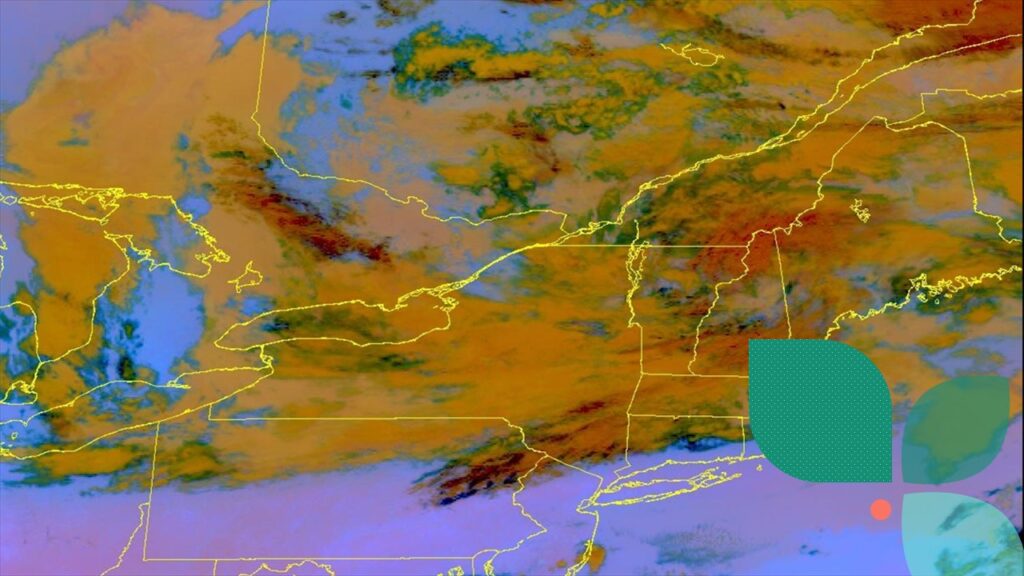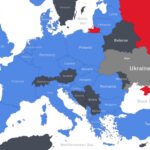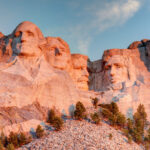
Dust map of the atmosphere over the Northeastern United States and portions of Canada. Image courtesy of NOAA.
Good morning from Newport, as we awaken to an eerie veil of haze/smoke casting an artificial penumbra onto the scene. We, like millions of other Americans, are now under an air quality alert, and hazardous smoky conditions look like they will be around for days.
With what appears to be a blistering start to summer, what are you to do? Ten million acres of land already burned by early June, reports the WSJ.
According to the country’s natural resources department, a typical fire season includes about 600,000 acres would have been burned by this point. The WSJ reports that half of these fires are caused by humans.
Why Is Air Quality So Bad Right Now in the U.S.?
Wildfire smoke contains particulate-matter pollutants that are just 2.5 micrometers in diameter—smaller than the size of a human hair. These tiny particles can lower air quality, and when inhaled can get into the lungs and enter the bloodstream.
Tiny particles get past the body’s natural defenses. Larger particles can get trapped in the nose and the mucus, and you can expel them and cough them out, but those smaller particles penetrate deep in the lungs.
Such particulate matter has been linked to a number of health problems in the lungs, according to AirNow, a U.S. government entity that monitors air quality.
As of Wednesday, the Weather Service had issued air-quality alerts for more than a dozen states, including New York, New Jersey, Maryland and Massachusetts. Some health experts recommend people check air quality in their area using AirNow.
Health Risks Associated with Exposure to Smoke from Wildfires.
Short-term exposure—a timeline of days to weeks—is associated with increased risk of exacerbating pre-existing respiratory conditions like asthma, according to the EPA.
Such exposure can also lead to coughing and difficulty breathing, as well as reduced lung function, heart attack, stroke and increased risk of emergency-room visits and hospital admissions.
What Is the Air Quality Index and What Is a Healthy Amount?
The Air Quality Index used in the U.S. helps determine which groups of people should be concerned when poor air quality is detected.
The index, which is on a scale of 0 to 500, offers recommendations for those groups using a six color-coded system. Good air quality (green) is between 0 and 50 on that index.
As of Wednesday 2 p.m. local time, the New York City metro area entered the purple, or “very unhealthy” category above 235 on the index, which indicates people in sensitive groups, including individuals with heart or lung disease, should avoid all physical activity outdoors and move activities indoors or reschedule them.
Everyone else is recommended to avoid prolonged or heavy exertion and consider moving activities indoors or rescheduling.
How to Protect Yourself from the Health Risks of Smoke Exposure.
Limiting your exposure to smoke and staying indoors is highly advisable. Keep windows and doors closed.
The EPA suggests choosing a clean room where the doors and windows can remain closed for long periods of time. It is a good place to put an air filter if you have one.
Check that their window ACs are recirculating air from indoors rather than pulling air from outside.
Should I Buy an Air Purifier or Wear a Mask?
Create a clean room using an air purifier with high efficiency particulate air, or HEPA, filter, particularly for people with lung disease or for those starting to have symptoms like coughing, wheezing and shortness of breath. People who feel ill should contact a healthcare provider and go to the emergency room if needed, he added.
Wear N95 or KN95 masks, which can help reduce the number of particles that you inhale.
Exercising Outdoors?
Health experts generally advise against exercising outdoors once the AQI exceeds 150.
Indoor exercise is normally fine, so long as the room in which you’re exercising has good air filtration. For people without high-risk health conditions, limited, short-term exposure to polluted air is unlikely to cause long-term problems but it will probably still be uncomfortable, health experts say.
“If you’re a normal runner and you run three miles every morning in Central Park, you can probably make this run and you’ll have short-term health effects like coughing and itching and burning eyes,” says Rich Branson, respiratory therapist and professor at the University of Cincinnati College of Medicine.
Heavy exertion over long periods is likely to produce the worst symptoms, so those who don’t have the option of staying indoors should try to limit one or the other, doctors say. People walking outdoors should give themselves extra time to get between locations to avoid heavier breathing that can introduce more pollutants into the air sacs in the lungs that can get into the bloodstream, said Dr. Alex McDonald, a family and sports medicine physician in Southern California.
Why Is the Smoke from Canada Drifting into the U.S.?
North-to-northwesterly winds are transporting the smoke from Quebec south into New York, parts of New England, the Midwest and the northeastern U.S, according to meteorologists.
A pattern of low pressure sitting above parts of Nova Scotia, Maine and Atlantic Canada has been driving the direction of those winds for the past two days.
“It’s just bad luck,” said a state meteorologist for the Rhode Island Department of Environmental Management. If the winds were southerly, this would all be going up toward the Arctic Circle.”
The closer the fire is, the less chance for smoke to get higher in the atmosphere and mix out. Novia Scotia’s proximity to the U.S. has exacerbated low air quality.
When Will Air Quality Improve?
The wind doesn’t appear to be shifting in a favorable direction over the next day or two, officials said during a briefing by the New York State Department of Health and Department of Environmental Conservation.
“We’re really going to be in this pattern here over the next several days,” said Nelson Vaz, a warning coordination meteorologist with the National Weather Service in New York, adding that it doesn’t look like a shift in the low-pressure area that’s driving the unfavorable winds will happen until the weekend or into early next week.
Once that low-pressure area starts to weaken, the associated wind pattern will flip, and allow smoke to get pushed away from the U.S., which may improve air quality.
What Is the Canadian Government Doing to Address the Issue of Bad Air Quality?
Conditions that caused this wildfire crisis are hard to prevent, very dry with little rain. Temperatures are elevated, and one spark from lightning, and then it’s sort of out of control.
PM J. Trudeau said Monday the government was giving federal assistance to Alberta, Nova Scotia, and Quebec. More than 20,000 Canadians have had to evacuate from their homes.
Improving forest management in some of the more remote parts of Canada may be a takeaway lesson from all this.
Dealing with air pollution is a fickle beast, because it’s transboundary.
Trudeau said Monday (that) he expected Canada would have enough resources to fight the fires through summer.
Drought and warm temps have undoubtedly aggravated the fires, but, as the WSJ notes.
The bigger culprit is “poor forest management that has let fuel accumulate over decades.”
This hardly gets a mention in media reports, nor from anti-fossil fuel politicians. “Since the Paris Accords, the 4 major U.S. banks—including 2 with HQs here in the city with the worst tonight—have lent over $1 trillion for new fossil fuel supply projects,” New York City comptroller Brad Lander tweeted Tuesday. “Tonight’s a smoke signal that it’s time for them to stop.” Maybe the smoke clouded his judgment.
The reality is that even if U.S. banks stopped financing fossil-fuel projects today, global CO2 emissions would rise for decades owing to growing coal production in India and China. Another inconvenient truth is that government policies to reduce CO2 emissions will be swamped by wildfire emissions.
Government land management policies that prevent wildfires from spreading out of control, such as prescribed burns, would reduce CO2 emissions more than offshore wind or electric-vehicle mandates.
Alas, this doesn’t fit with the climate left’s book of Revelation.
If you’re willing to fight for Main Street America, click here to sign up for the Richardcyoung.com free weekly email.





